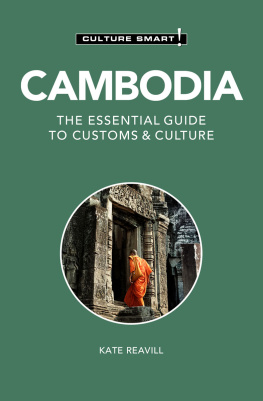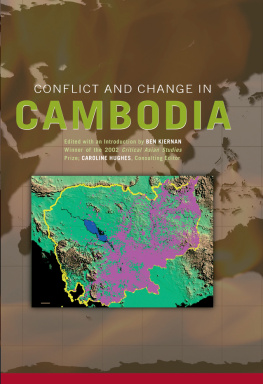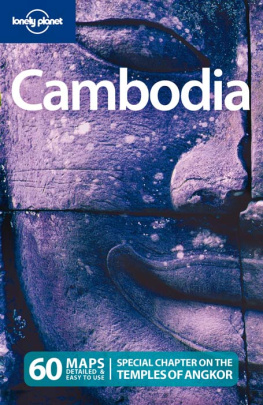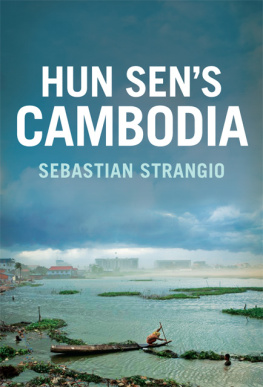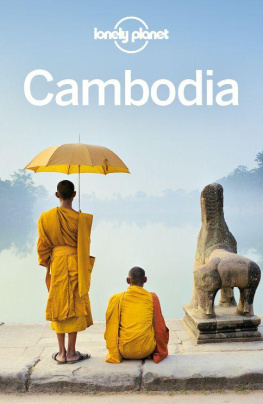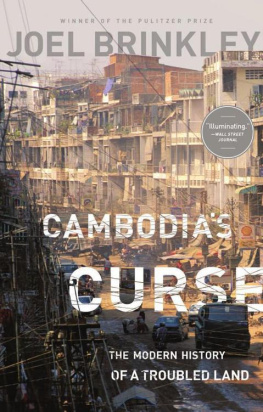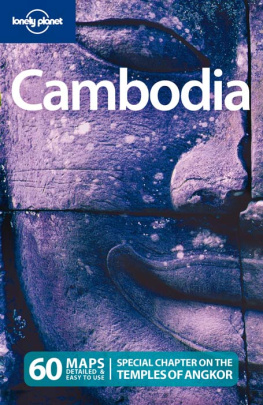A SHORT HISTORY OF
CAMBODIA
Short History of Asia Series
Other books in the series
Short History of Bali, Robert Pringle
Short History of China and Southeast Asia, Martin Stuart-Fox
Short History of Indonesia, Colin Brown
Short History of Japan, Curtis Andressen
Short History of Laos, Grant Evans
Short History of Malaysia, Virginia Matheson Hooker
Series Editor
Milton Osborne has had an association with the Asian region for over 40 years as an academic, public servant and independent writer. He is the author of many books on Asian topics, including Southeast Asia: Anintroductory history, first published in 1979 and now in its ninth edition, and The Mekong: Turbulent past, uncertain future, published in 2000.
A SHORT HISTORY OF
CAMBODIA
FROM EMPIRE TO SURVIVAL
By John Tully

First published in 2005 by Allen & Unwin
Copyright John Tully 2005
Maps by Ian Faulkner
All rights reserved. No part of this book may be reproduced or transmitted in any form or by any means, electronic or mechanical, including photocopying, recording or by any information storage and retrieval system, without prior permission in writing from the publisher. The Australian Copyright Act 1968 (the Act) allows a maximum of one chapter or 10 per cent of this book, whichever is the greater, to be photocopied by any educational institution for its educational purposes provided that the educational institution (or body that administers it) has given a remuneration notice to Copyright Agency Limited (CAL) under the Act.
Allen & Unwin
83 Alexander Street
Crows Nest NSW 2065
Australia
Phone: (61 2) 8425 0100
Fax: (61 2) 9906 2218
Email: info@allenandunwin.com
Web: www.allenandunwin.com
National Library of Australia
Cataloguing-in-Publication entry:
Tully, John A. (John Andrew),
A short history of Cambodia : from empire to survival.
Bibliography.
ISBN 1 74114 763 8.
1. Cambodia History. 2. Cambodia Politics and government. 3. Cambodia Economic conditions. I. Title. (Series : Short history of Asia).
959.6
Set in 11/14 pt Goudy by Midland Typesetters, Australia
Printed by South Wind Production, Singapore
10 9 8 7 6 5 4 3 2 1
For my parents, Matthew and Ethel
Contents
This book traces the history of Cambodia from the Indian-influenced state of Funan, which predated Angkor (founded in 802), to the present: a grand sweep of over 2000 years. Also included is a brief discussion of the pre-history of what is today Cambodia in Chapter 2. The Cambodian monarchy is over 1200 years old; King Sihamoni, who sits on the throne today, is the latest incumbent in a line dating from the reign of King Jayavarman II, the shadowy founder of Angkor, the first unified polity of Cambodia. It is not an unbroken bloodline of kings, but was disrupted by usurpers on many occasions. The institution, however, has remained constant for almost all of this time. If we count Jayavarman IIs predecessors, the monarchy is even older, and epigraphic evidence indicates that Khmer culture predates him by around 200 years. Whether those that lived here before were Khmers, we cannot say, although it is probable that they were.
If the monarchy has been remarkably resilient, so too have been the Khmer people and their culture, which sustained the kingdom. Although there have been some sharp discontinuities in Cambodian history, the Khmers today, particularly the rural dwellers who still make up the majority of the population, live much as their ancestors did. In their heyday, the martial Khmers carved out an immensely powerful empire with Angkor, the largest city of antiquity, at its centre. Today we see only the stone heart of a city that has long since rotted away, and can trace the pattern of the citys veins, the network of canals that carried life-giving water from the distant heights of Kulen. Then, as now, the largest class was the peasantry, although they doubled as soldiers and builders. When the first European visitors arrived in the 16th century, the empire was in decline and the centre of gravity of the Cambodian state had shifted downstream to the Quatre Bras region at the head of the Mekong delta, where it remains today. The possible reasons for this shift are discussed in Chapter 3.
Later years saw Cambodia gradually squeezed on two sides by powerful enemies, the Siamese (todays Thais) to the west in the Menam Valley, and the Vietnamese to the east. The Vietnamese, who had migrated much earlier from what is today the Canton region of China to the Hanoi region, steadily pushed southwards and by 1780 they had completed their occupation of Kampuchea Krom, the formerly Khmer lands around what is today Saigon in the lower Mekong delta. In the same period, the Siamese kings carved off chunks of Cambodian territory, and both neighbours demanded tribute. Cambodia had gone from empire to vassal state and by the late 18th century its sovereignty was in peril. The country had entered into a Dark Age. Rival armies of foreigners fought on Cambodias soil and sacked its towns. The Vietnamese directly administered the country for 30 years during the first half of the 19th century, placing puppets on the throne and striving to assimilate the Khmers, whom they regarded as barbarians, into Vietnamese culture. Cambodia almost became a Vietnamese province: the earlier fate of the Khmer lower Mekong delta lands. King Ang Duang restored order and a measure of sovereignty, but after his death in 1860 the country was once again plunged into chaos. This period is discussed in Chapter 4.
Most historians conclude that Cambodia would have disappeared if Duangs successor and eldest son, King Norodom, had not negotiated a treaty with France to keep his neighbours at bay. Under the terms of the treaty, as discussed in Chapter 5, his kingdom became a protectorate in 1863. The Siamese seethed, but could do little against superior force. The French gradually tightened control over the Kingdom to create a de facto colony, administered by a powerful official known as the RsidentSuprieur. In 1887, Cambodia became part of the newly created Indo-chinese Federation under a governor-general with his capital at Hanoi. Along the way, French heavy-handedness provoked a huge revolt and Norodom died some years later a broken old man. Despite this, the French did preserve the countrys territorial integrity and much of its traditional way of life. The downside of the colonial period was that the French left a model of authoritarian rule and failed to develop the country socially and economically, thus contributing to later tragedies that befell Cambodia.
The colonial period lasted until 1953, when King Norodom Sihanouk led his royal crusade for independence, which saw the restoration of Cambodian sovereignty even before the 1954 Geneva peace conference agreed to independence for the rest of French Indochina. Sihanouk was a complex man and although an unpredictable autocrat, he managed to sustain his countrys neutrality throughout the 1950s and 1960s. In this he resembled an acrobat on a high wire; when he slippedor was, rather, pushed in a right-wing pro-American coup in March 1970his pride was badly damaged, but the consequences for his subjects were much direr. The Sihanoukist period is the subject of Chapter 6.
Between 1970 and 1979, Cambodia blundered into a modern Dark Age. Civil war, cataclysmic aerial bombardment and Pol Pots bloody revolution almost destroyed the country. These disasters are examined in Chapters 7 and 8. Since the overthrow of the Pol Pot regime by Vietnamese forces in 1979, the country has struggled against the odds to rebuild itself, and this is the subject of Chapters 9 and 10. The rebuilding was not straightforward, but was a confused and contradictory process. As the American writer Evan Gottesman has noted in his insightful book on post-DK Cambodia, Cambodia did not
Next page



